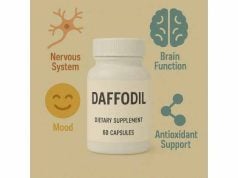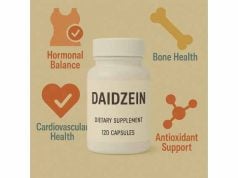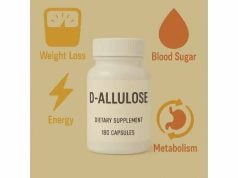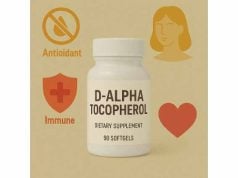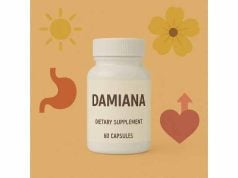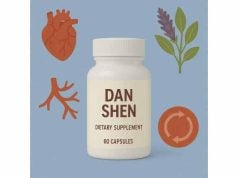
Dwarf pine extract—most often derived from Pinus mugo (also called mountain or dwarf mountain pine)—is a concentrated preparation of compounds found in the tree’s needles, buds, twigs, or cones. In practice, products sold as “dwarf pine extract” are usually either an essential oil (volatile terpenes distilled from the plant) for inhalation or topical use, or a non-volatile needle or bud extract standardized for polyphenols. Traditional uses center on respiratory comfort, skin support, and a fresh, resinous scent. Modern lab studies describe antimicrobial, antioxidant, and anti-inflammatory actions, but high-quality human trials are limited. This guide sorts what the science shows, how to use the extract safely and practically (without hype), who should avoid it, and how to choose a product that fits your goals.
Quick Dwarf Pine Highlights
- In vitro data show antimicrobial and antioxidant activity; human outcomes are limited and preliminary.
- Main actives include α-pinene, β-pinene, limonene, and bornyl acetate; scent may ease perception of airway openness.
- Typical use: 2–5 drops in a diffuser (100 mL water) or 1–2% topical dilution; oral essential oil use is not recommended.
- Safety: essential oil can irritate skin and airways; avoid undiluted use and ingestion; keep away from infants and pets.
- Avoid if pregnant, if you have asthma that worsens with fragrances, or if you have a history of fragrance allergy—choose alternatives.
Table of Contents
- What is dwarf pine extract and how does it work?
- What benefits are supported by research?
- How to use dwarf pine extract day to day
- How much to use and how often
- Side effects, interactions, and who should avoid
- What the evidence says overall
What is dwarf pine extract and how does it work?
Botanical identity and forms. Dwarf pine extract typically refers to preparations from Pinus mugo Turra, a hardy, shrub-like conifer native to European mountain regions. Two distinct product families exist:
- Essential oil (EO): Obtained by steam distillation of needles, buds, twigs, or cones. It concentrates volatile terpenes such as α-pinene, β-pinene, limonene, δ-3-carene, and bornyl acetate. These compounds carry the classic pine aroma and readily evaporate into the air.
- Non-volatile extracts: Produced by maceration or solvent extraction (e.g., water-ethanol) of needles or buds, yielding polyphenols (flavonoids, procyanidins) and other constituents that do not distill into essential oil. These may be formulated as drops, capsules, or syrups (sometimes marketed as “bud extracts”).
Understanding which type you have is critical: essential oils are not the same as polyphenol-rich extracts, and their uses and safety profiles differ.
Mechanisms proposed. Lab studies suggest several ways P. mugo constituents might act:
- Antimicrobial effects: α-pinene and limonene demonstrate activity against selected bacteria and fungi in vitro. Essential oils from Pinus species, including P. mugo, can disrupt microbial membranes and biofilms in lab settings.
- Antioxidant potential: Needle extracts (especially non-volatile, polyphenol-rich fractions) scavenge free radicals in chemical assays. While essential oils show some antioxidant signals, polyphenolic extracts generally test stronger in these models.
- Inflammation signaling: In vitro work (e.g., cancer cell models) indicates that P. mugo essential oil can influence pathways such as STAT3; this speaks to mechanistic plausibility, not a clinical cancer therapy.
- Airway comfort (sensory): Pine’s volatile profile produces a cooling, forest-fresh aroma. Even without changing airflow mechanics, odor perception can make breathing feel easier for some people—a legitimate, subjective outcome valued in aromatherapy.
Chemotype variability. The exact profile of P. mugo essential oil varies with plant part, altitude, season, and geography. Some batches are α-pinene-dominant, others show more δ-3-carene or bornyl acetate. This variability explains why different products smell and behave slightly differently—and why reliable suppliers provide GC/MS (gas chromatography–mass spectrometry) profiles.
What dwarf pine extract is not. Do not confuse P. mugo products with pine bark extracts (e.g., Pinus pinaster maritime pine, branded Pycnogenol), which are chemically and clinically distinct. Also, turpentine and household pine oil cleaners are not supplements; they are hazardous if swallowed and unrelated to therapeutic use.
Bottom line. Dwarf pine essential oil is best suited to aromatic and topical applications; non-volatile extracts may deliver antioxidants but lack consistent human outcome data. Treat both as adjuncts for comfort and self-care rather than proven medical therapies.
What benefits are supported by research?
Respiratory comfort (aromatic use). Pine-scented vapors are widely used for perceived ease of breathing. While participants often report a feeling of clearer airways, most supportive data come from short-term, non-clinical settings. The terpenes in P. mugo essential oil—especially α-pinene—are volatile and can stimulate trigeminal/sensory pathways that feel decongesting. This does not mean the oil opens blocked nasal passages like a pharmaceutical decongestant; rather, it can support comfort during minor, self-limited congestion. Evidence in people with chronic lung disease or asthma is insufficient, and some individuals find fragrances irritating.
Antimicrobial potential (in vitro). Multiple lab studies report that essential oils from Pinus species (including P. mugo) can inhibit or kill selected bacteria and fungi in petri-dish assays. A 2024 peer-reviewed study from Bosnia and Herzegovina measured antimicrobial activity across several Pinus species—P. mugo among them—and noted notable activity against Staphylococcus aureus and Enterococcus faecalis under test conditions. These results highlight potential but don’t translate directly into clinical recommendations (skin infections and respiratory infections require medical care).
Antioxidant properties (in vitro). Needle extracts across Pinus species show free-radical scavenging in chemical tests. A 2021 systematic evaluation of 54 pine taxa measured antioxidant activity of essential oils and needle extracts, finding that non-volatile extracts tended to outperform essential oils in these assays. This fits everyday experience: polyphenol-rich plant extracts commonly test stronger as antioxidants than the corresponding volatile fraction.
Inflammation signaling and oncology (preclinical). In human prostate cancer cells, P. mugo essential oil reduced STAT3 activation and induced apoptosis in vitro. While mechanistically interesting, this is not evidence to use the oil for cancer. Essential oils are not cancer treatments; do not substitute them for standard care.
Skin applications (topical). Traditional use includes chest rubs and muscle balms. Terpenes can impart a warming sensation and a pleasant aroma, supporting massage and relaxation. Antimicrobial properties observed in vitro encourage research on skin microbiome modulation; however, controlled trials in humans are sparse, and the main real-world benefit is sensory (comfort, routine) rather than disease modification.
What we do not have yet. Robust randomized controlled trials testing dwarf pine essential oil or needle extracts for outcomes like cough duration, sinus symptoms, wound healing, or eczema relief are limited or lacking. When evidence is mostly in vitro, a reasonable stance is: use for comfort, not cure; make safety the priority; and seek medical evaluation for persistent or serious symptoms.
Takeaway. The best-supported claims for dwarf pine extract are plausible and preclinical: antimicrobial and antioxidant activity in lab assays, plus a well-tolerated scent that many find helpful for perceived breathing ease. Human efficacy data remain limited, so set expectations accordingly.
How to use dwarf pine extract day to day
Match the form to the goal.
- For scent and perceived airway comfort: Choose dwarf pine essential oil for aromatic use (diffuser or steam).
- For skin care routines (e.g., chest rub, muscle massage): Use the essential oil in a diluted topical blend, never neat.
- For antioxidant-leaning wellness: If you prefer a non-volatile needle or bud extract, look for standardized polyphenol content and clear labeling (species, plant part, solvent). These are not essential oils.
Aromatic (diffuser) use—simple and practical.
- Water diffuser: Add 2–5 drops of P. mugo essential oil to 100 mL of water. Run for 20–30 minutes, then pause. More scent is not better; intermittent diffusion limits odor fatigue and exposure.
- Steam inhalation (adults only): Add 1–2 drops to a bowl of hot (not boiling) water. Keep eyes closed, drape a towel loosely, and inhale for 5–10 minutes. Stop if you feel irritation or dizziness.
- Room spray: Combine 10–15 drops in 50 mL of high-proof ethanol or perfumer’s alcohol in a spray bottle; spritz into the air away from face and pets.
Topical (diluted) use—safe basics.
- General adult dilution: 1–2% essential oil in a carrier (e.g., jojoba, sweet almond). That’s 10–20 drops per 30 mL (1 fl oz) carrier.
- Chest rub example: For 60 mL carrier, add 12–24 drops of essential oil (≈1–2%). Apply a small amount to chest and upper back; avoid face and broken skin.
- Sports massage balm: Blend P. mugo with complementary oils (e.g., rosemary, lavender) at total 2%. Patch-test first: apply a pea-sized amount inside the forearm for 24 hours; discontinue if redness or itching occurs.
Non-volatile extracts (capsules, drops).
- These are not essential oils. If choosing a needle or bud extract for general wellness, follow the manufacturer’s standardization and directions, as strengths vary. Evidence for oral use is limited; expect general antioxidant support rather than disease-specific benefits.
- If your goal is a cough syrup or “bud macerate,” select products with transparent ingredient lists and avoid ethanol levels that conflict with personal or medical restrictions.
Good product practices.
- Read the label: Confirm species (Pinus mugo), plant part, country of origin, and for essential oils, a GC/MS report when available.
- Store well: Keep the bottle tightly closed, away from heat and light; terpenes oxidize over time, increasing the risk of skin irritation. Discard oxidized or very old oils.
- Keep away from children and pets: Essential oils are potent; ingestion can be dangerous.
When to seek medical care. Persistent cough (>3 weeks), high fever, chest pain, shortness of breath, or skin infections warrant professional evaluation. Treat dwarf pine extract as supportive care, not a substitute for diagnosis or treatment.
How much to use and how often
Because most benefits attributed to dwarf pine extract rely on aromatic or topical effects, the most practical “dosages” are drop counts and dilution percentages—not milligrams.
For essential oil (aromatic):
- Diffuser (standard ultrasonic): 2–5 drops per 100 mL water, run 20–30 minutes, 1–3 times/day as needed. If the scent feels strong or irritating, reduce drops or increase room ventilation.
- Personal inhaler (wick-style): Add 8–15 drops to the wick; inhale 1–2 slow breaths as needed, up to 3–5 times/day. Replace wick every 1–2 months.
- Steam inhalation (adults, short term): 1–2 drops in hot water, 5–10 minutes once daily for up to 3 days during mild, self-limited congestion. Avoid for children, people with fragrance-triggered asthma, or anyone prone to dizziness with heat or steam.
For essential oil (topical):
- Everyday adult dilution: 1–2% (≈ 1–2 mL essential oil per 100 mL carrier).
- Short-term localized use (e.g., muscle massage): Up to 3% on small areas for a few days if well-tolerated.
- Sensitive skin, older adults: Start at 0.5–1%.
- Children: Avoid essential oil use under 6 years unless guided by a clinician trained in pediatric aromatherapy; never apply near the face of infants or toddlers.
For non-volatile needle or bud extracts (oral):
- There is no consensus clinical dose for P. mugo needle or bud extracts. If you choose a capsule or tincture labeled as Pinus mugo extract, follow manufacturer dosing and do not exceed labeled amounts. Because human trials are limited, avoid long continuous use; instead, consider short stints (e.g., 7–10 days) aligned with seasonal needs, then pause and reassess.
What not to do:
- Do not ingest essential oil. Pine-derived oils can be hazardous if swallowed and have caused poisonings.
- Do not use undiluted on skin. Neat application increases the risk of irritation or sensitization, particularly as oils oxidize over time.
- Do not diffuse constantly. Intermittent use reduces odor fatigue and unnecessary exposure.
How to judge quality and potency:
- A trustworthy essential oil will list a batch number, harvest or distillation date, and often a chemotype profile (e.g., α-pinene 25%, bornyl acetate 18%). Potency differences explain why some bottles smell more resinous (bornyl acetate) while others smell brighter (α-pinene/limonene).
Frequency and duration:
- Aromatic support: Short sessions (20–30 minutes) work well; evaluate comfort after a few uses.
- Topical routines: Once or twice daily for up to 2 weeks, then break to watch for delayed sensitivity.
Side effects, interactions, and who should avoid
Potential side effects.
- Skin irritation or allergy: α-pinene and related terpenes can sensitize the skin, especially as oils oxidize. Always dilute and patch-test. Discontinue if you develop redness, itching, or hives.
- Airway irritation: Any fragrance can bother people with reactive airways or migraine. If you notice coughing, wheezing, chest tightness, or headache, stop exposure and ventilate.
- Gastrointestinal and systemic toxicity (if swallowed): Ingestion of pine-derived oils (including turpentine or pine oil cleaners) may cause nausea, vomiting, abdominal pain, respiratory distress, or central nervous system effects. Accidental ingestion requires urgent poison control guidance.
Who should avoid or use only with professional guidance.
- Pregnancy or breastfeeding: Avoid essential oil use unless cleared by a clinician. Data are limited, and many experts advise against pine essential oil during pregnancy.
- Infants and young children: Avoid diffusion around infants; never apply essential oil near the face of infants or toddlers. For children under 6 years, skip essential oils unless a pediatric professional advises otherwise.
- Asthma or fragrance sensitivity: If scents trigger symptoms, avoid aromatic use.
- Dermatitis or multiple chemical sensitivity: Choose fragrance-free approaches instead.
- Pets: Cats and some small animals are sensitive to essential oils. Do not diffuse in enclosed spaces with pets present.
Drug interactions. Classic small-molecule interactions are unlikely at typical aromatic or diluted topical exposures. However, if you use topical medications (e.g., corticosteroids, calcineurin inhibitors), avoid simultaneous application on the same area to minimize confounding irritation.
Storage and oxidation—why it matters. Terpenes slowly oxidize, increasing skin-sensitizing potential. Minimize air exposure (tightly cap), store in amber glass, keep cool and dark, and discard oils past their recommended shelf life (often 1–3 years after opening, sooner if frequently opened).
Emergency steps after accidental ingestion. Do not induce vomiting. Contact Poison Control (in the U.S., 1-800-222-1222) or your local equivalent immediately; seek emergency care if the person is drowsy, vomiting, has trouble breathing, or is a child.
Bottom line. At sensible, diluted topical doses and short, intermittent aromatic exposures, dwarf pine essential oil is generally well-tolerated in healthy adults. The primary risks are skin sensitization and airway irritation; the serious risk is ingestion, which must be avoided.
What the evidence says overall
What is strongest right now. The scientific support for dwarf pine extract is heaviest in:
- Chemistry and composition: We understand the major constituents and how they vary by geography and plant part.
- Lab bioactivity: Antimicrobial and antioxidant effects are reproducible in vitro; essential oil can modulate signaling pathways (e.g., STAT3) in cell models.
What is promising but unproven. Real-world endpoints such as shorter cough duration, better sinus comfort, wound healing speed, or eczema improvements have not been rigorously demonstrated in randomized human trials. Aromatic use reliably provides subjective comfort for many users, which is legitimate but not the same as a disease-modifying effect.
How to use the evidence wisely.
- Treat dwarf pine extract as a sensory aid and self-care adjunct, not a cure.
- Prefer intermittent, low-dose aromatic use and properly diluted topical blends.
- If you desire antioxidant support, a non-volatile needle extract (not an essential oil) aligns better with the available evidence—but still lacks strong clinical outcomes.
- Maintain realistic expectations and prioritize safety.
Quality and sustainability tips.
- Choose suppliers that report species, plant part, origin, and batch GC/MS.
- Support sustainable harvesting practices (alpine shrubs are slow-growing; responsible sourcing matters).
- Avoid adulterated “pine” oils cut with synthetic terpenes; reputable labs can detect this.
Where research should go next. Helpful trials would test aromatic protocols for short-term upper-respiratory comfort (e.g., standardized diffusion sessions vs. placebo scent), and topical chest rubs for perceived breathing ease or sleep quality during colds. For needle extracts, studies could track skin outcomes, exercise recovery, or subjective stress measures where scent and ritual plausibly contribute.
Practical decision rule. If you enjoy the scent and tolerate it well, dwarf pine essential oil can be a pleasant, low-risk addition to your routine when used intermittently and diluted. If you need help with persistent symptoms, seek clinical care first, then consider pine as supportive, not primary, therapy.
References
- Antimicrobial Activities of Essential Oils of Different Pinus Species from Bosnia and Herzegovina (2024) (Review of composition and antimicrobial activity across Pinus species, including P. mugo).
- Pinus mugo Essential Oil Impairs STAT3 Activation through Oxidative Stress and Induces Apoptosis in Prostate Cancer Cells (2022) (In vitro mechanistic study).
- Essential oil composition variability among natural populations of Pinus mugo Turra in Kosovo (2015) (Chemotype and composition variability by plant part and region).
- Antioxidant Potential of Pine Needles: A Systematic Study on the Essential Oils and Extracts of 46 Species of the Genus Pinus (2021) (Systematic evaluation of antioxidant activity in Pinus taxa).
- Pine oil poisoning (2023) (Safety and poisoning guidance for pine oil ingestion).
Medical Disclaimer
The information in this article is educational and not a substitute for professional medical advice, diagnosis, or treatment. Essential oils are concentrated and can irritate skin and airways; ingestion can be dangerous. If you are pregnant or breastfeeding, have asthma or chronic lung disease, have a history of fragrance allergy, or plan to use products on children, consult a qualified healthcare professional before use. Seek medical care for persistent or severe symptoms, and never delay or disregard professional advice because of something you read here.
If this guide helped you, please consider sharing it on Facebook, X (formerly Twitter), or your preferred platform, and follow us for more evidence-based wellness content. Your support helps us continue creating high-quality, reader-first guides.

